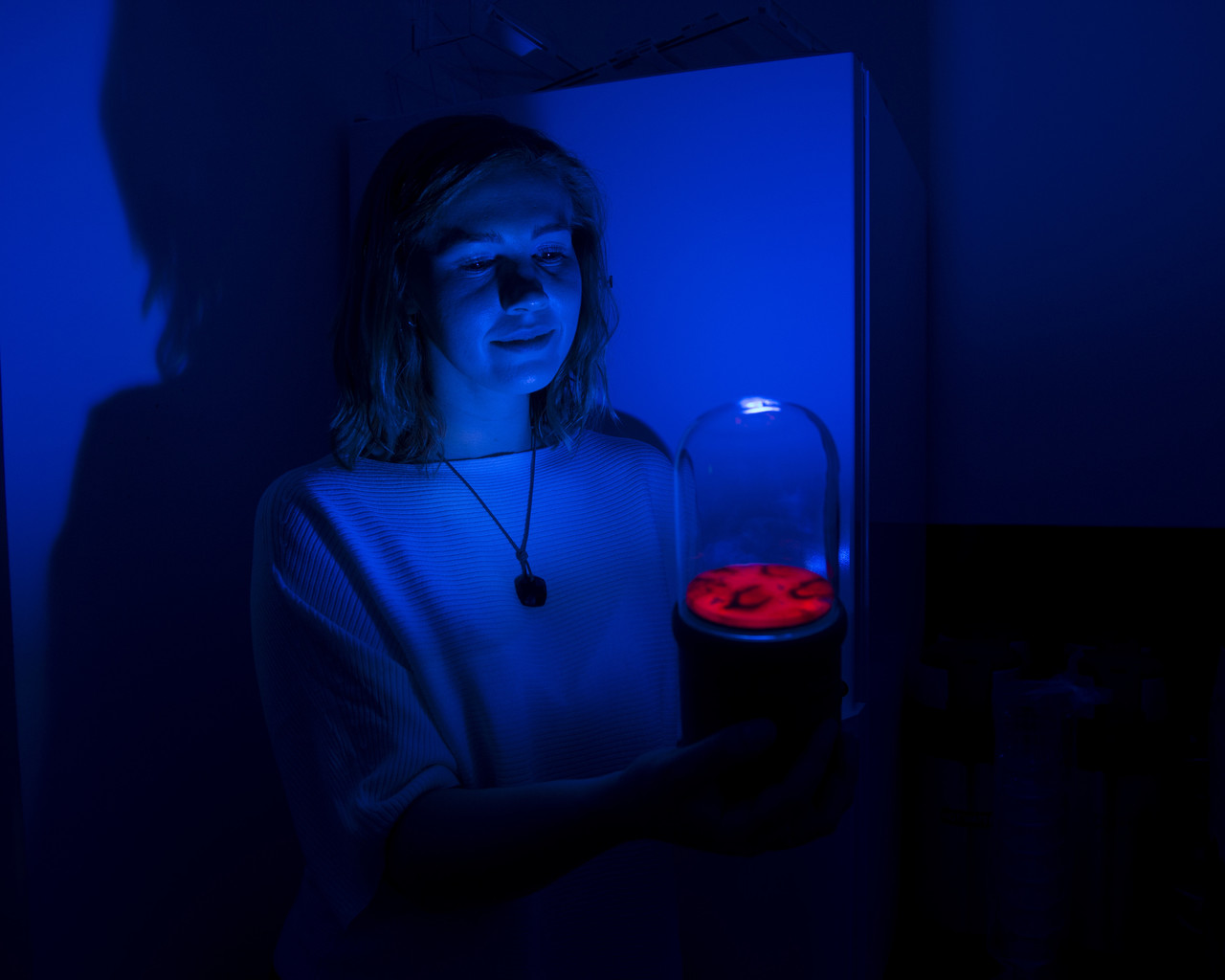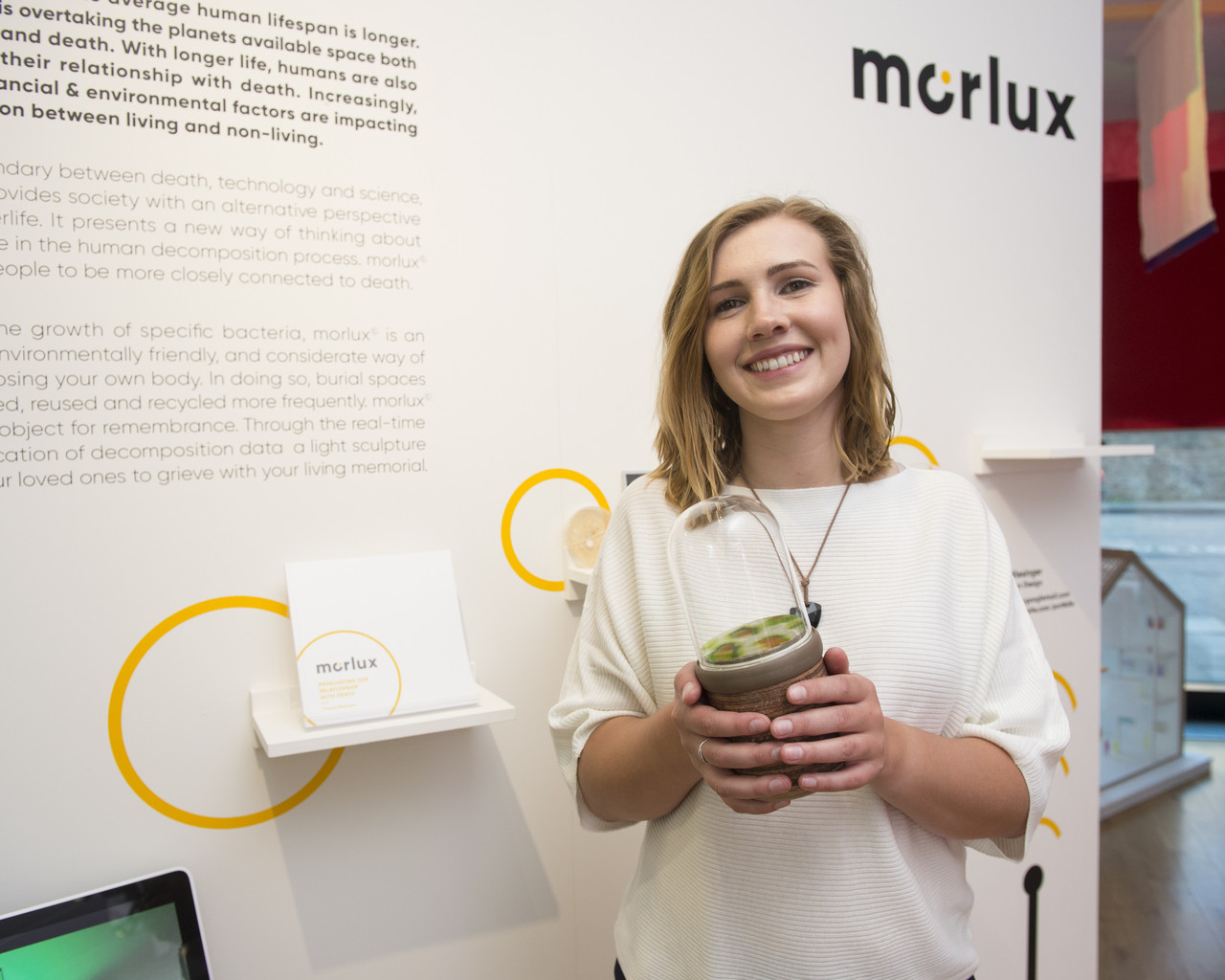Degree Show project aims to challenge society’s attitude towards death
Date posted
25 May 2018
09:53
Last updated
19 March 2020
An Edinburgh Napier student is using her Degree Show project to break down boundaries regarding one of society’s most uncomfortable topics to talk about – death.
Theresa Wiesinger, who is studying for her Masters in Interaction Design, wants to address the taboo subject in a positive manner and is developing a project that will make death more environmentally friendly while simultaneously providing loved ones with a living memorial.
Her device, morlux©, grows modified bacteria which helps accelerate decomposition so burial spaces can be re-used more frequently without the need for caskets or embalming. At the same time, the data from the decomposition is transmitted to loved ones and turned into a living light sculpture which changes over time, eventually settling into an eternal white light.
“It is important to me to address this topic as it is part of our lives whether we want it or not,” said Theresa. “Providing our future society with an alternative, efficient, considerate and environmentally-friendly perspective to death might make us re-think our current practices.
“By working at the boundary between design, technology and science, I was searching for a topic which would not only be innovative in its context but also communicate an important message to our society. Therefore, I decided to work with one of the least-discussed topics in our modern western world, death.”
The project is speculative at this stage, with Theresa aiming it at a future society, particularly people who are terminally ill or approaching the end of their lives.
“The project aims to provide them with an alternative perspective to the afterlife and enables them to be more closely connected to their own death in order to find acceptance not only for themselves but also for their loved ones,” she said.
There are three steps to morlux©: ‘Before Death’, ‘Death’ and ‘After Death’. The user grows modified bacteria within the device in order to be more closely connected to his or her death, forming a relationship to come to terms with it. After the user’s death, the modified bacteria is inserted with the body into a natural burial site, requiring no casket or embalming.
While it normally takes between eight and 12 years for a body to decompose naturally, the bacteria accelerates the process to a fraction of the time, making it possible to reuse the burial space more frequently. As this happens, the real-time decomposition data is transmitted via WiFi to the living light sculpture, which runs from red to blue to green through the different stages until the body is fully decomposed. It then settles on an eternal white light, offering emotional support through the usage of a living memorial.
Theresa admits that while the idea is controversial, it has received positive feedback.
“Through focus groups I was able to get an insight into people’s opinion about the topic of death as well as the project itself,” she said. “I also gave away some ‘test kits’, in which the participants had to grow their own bacteria as well as to maintain it for seven days. Overall, the reaction I received so far was surprisingly positive, although it is a very controversial topic and not everyone agrees completely with it.
“The most important aspect of my project is that it aims to make our society re-think current burial and death practices. The project should encourage people to be more open towards more controversial, but also more environmentally-friendly funeral options in the future.”
Study Design at Edinburgh Napier